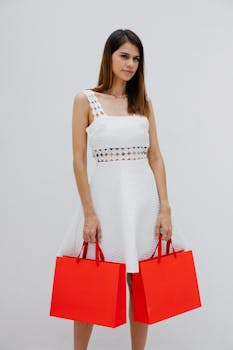Optimizing Alt Text for Different Types of Content
Moving Beyond SEO: The Broader Benefits of Alt Text
Alt text isn’t just a checkbox for SEO; it can be a storytelling tool. Good alt text brings images to life. It adds context and emotion, making content more engaging. For example, instead of saying ‘a dog’, try ‘a golden retriever joyfully leaping in a sunlit park’.
Most people think alt text is merely for search engines. But I believe it’s so much more. It can create connections with users, especially those who rely on screen readers. When alt text tells a story, it enhances the overall experience.
Some experts argue that alt text should focus solely on descriptions. I think blending context with keywords is key. This way, you cater to SEO while enriching the narrative. For instance, saying ‘a child laughing with their golden retriever’ adds depth.
Many overlook the emotional aspect of alt text. It can evoke feelings and create a memorable experience. This is where the magic happens. When users connect emotionally, they’re more likely to engage with your content.
Exploring the broader benefits of alt text opens up new avenues for content creators. It’s not just about visibility; it’s about creating a richer user experience. Let’s embrace alt text as a powerful narrative tool. By doing so, we enhance accessibility and foster a deeper connection with our audience.
According to Level Access, “When images are accompanied by alt text, everyone can understand the content of a web page.” This highlights the dual role of alt text in both accessibility and storytelling.
Types of Content That Benefit from Alt Text
Images, infographics, and even videos all need alt text. Why? Because they contribute to SEO and accessibility. Every image tells a story, and alt text helps share that story.
For blog posts, descriptive alt text enhances the reader’s experience. Instead of just ‘dog’, try ‘a golden retriever playing fetch in the park’. This paints a picture, right?
Infographics are another goldmine for alt text. They often contain complex information. Describing the key points in your alt text can make that information accessible to everyone.
Videos? Yes, they need alt text too! Use it to summarize the content. This helps those using screen readers understand what they’re missing visually.
Some believe that alt text should be purely descriptive. But I think it’s time to mix in a bit of context. For instance, instead of just saying ‘a child with a dog’, how about ‘a child laughing as their golden retriever jumps’? This adds depth.
According to Level Access, “When images are accompanied by alt text, everyone can understand the content of a web page.” That’s what we’re aiming for!
Don’t forget about product images! Including brand names and details in the alt text can boost visibility. For example, ‘Nike Air Max running shoes in blue’ is way better than just ‘shoes’.
Incorporating alt text into various content types not only boosts SEO but also enhances user experience. It’s that simple!
And let’s not ignore the common mistakes. Avoid generic descriptions or irrelevant details. Be specific and relevant to what’s depicted.
So, whether it’s a blog image, infographic, or video, optimizing alt text is a must. It’s an easy step that pays off in accessibility and search engine ranking.
Measuring the Impact of Optimized Alt Text on SEO
Optimized alt text can significantly boost your website’s SEO performance. Most people think that simply adding alt text is enough. I think we need to dig deeper. Alt text should be tailored to the specific content it describes.
For instance, a product image should have alt text that includes branding. Instead of just saying ‘blue shoes,’ try ‘Nike Air Max running shoes in blue and white.’ This not only describes the item but enhances its visibility in search results.
According to Jordan Brannon from Coalition Technologies, “Optimizing alt text will improve your image SEO by making it more accessible for page readers and indexable to search engine crawlers.” This rings true!
Many experts advocate for keyword stuffing in alt text. But I believe this can backfire. Instead of cramming keywords, focus on creating natural, descriptive phrases that provide context.
Measuring the impact of optimized alt text is crucial. Use analytics tools to track how changes in alt text affect your image search rankings. If you see improvements, you’re on the right track!
Lastly, let’s talk about the emotional aspect. Alt text can tell a story. It can create a connection. For example, instead of ‘a child with a dog,’ try ‘a child laughing as their golden retriever jumps joyfully.’ This adds depth and can engage users on a more personal level.
So, let’s rethink how we approach alt text. It’s not just a box to check off; it’s a powerful tool for SEO and user engagement!
Additionally, alt text makes content accessible to other users, like those … Instead, type the text in the document and adjust the formatting of the …
Apr 19, 2023 … Add imagery to blocks of text. Other options: Use proper markup to optimize SEO; Add meaningful alt text for images. Mistake 3. Accessibility …
… different types of content. Form fields should be clearly labeled and … Alt Text is essential for both accessibility standards and Search Engine Optimization.
Mar 22, 2018 … Verify Tag Type and Reading Order – Use the TouchUp Reading Order tool to check that all tags in the document are the correct type (Text, Figure …
Best Practices for Writing Alt Text for Each Content Type
Different content types need tailored alt text. Images of products? Be specific. Describe the item and its features. For instance, instead of saying ‘shoes’, say ‘Nike Air Max running shoes in blue and white’. It’s that simple!
For blog images, context is key. If the image shows a person reading, say ‘a young woman engrossed in a book at a cozy café’. This paints a picture for users and search engines alike.
Infographics require a different approach. Summarize the infographic’s main points in the alt text. For example, ‘infographic showing the benefits of regular exercise, including improved mood and better sleep’. This helps convey the essence of the visual.
When it comes to decorative images, you can skip the alt text or use an empty alt attribute. This keeps screen readers from reading unnecessary content. However, if the image adds to the narrative, describe it briefly.
Video thumbnails also need alt text. Describe what viewers can expect. For example, ‘thumbnail of a tutorial on how to bake chocolate chip cookies’. This helps with both SEO and user experience.
Most people think that generic descriptions are sufficient. I think that’s a mistake. Specific, detailed alt text enhances both accessibility and SEO. It’s not just about keywords; it’s about context and clarity!
For more insights, check out Rachel Handley from SEMrush, who states, “Alt text is a powerful tool for boosting your website’s search engine optimization (SEO) efforts.”
Let’s not overlook the emotional connection. Adding a touch of storytelling can make alt text more engaging. For instance, ‘a child laughing as they chase bubbles in the park’ creates a vivid scene.
Incorporating these practices can significantly improve your alt text strategy and overall content engagement.
Common Mistakes in Alt Text Writing
Avoid these common pitfalls when writing alt text to ensure effectiveness and accessibility.
- Many writers use generic phrases like ‘image of’ or ‘picture of.’ This doesn’t provide valuable context.
- Overloading alt text with keywords is a major mistake. It can hinder user experience and accessibility.
- Failing to update alt text when the image changes is common. Always keep it relevant to the current content.
- Using overly detailed descriptions can confuse users. Keep it concise but informative.
- Ignoring the context of the image is a big no. Alt text should relate to the surrounding content.
- Writing alt text without considering screen reader users is a mistake. Think about how it aids navigation.
- Not including important details like color or action is a missed opportunity. These elements enhance understanding.
- Assuming all users can see the image is wrong. Alt text is for everyone, not just a few.
- Forgetting to use punctuation can lead to confusion. Clarity is key in alt text writing.
- Finally, neglecting to test how alt text reads aloud is a mistake. It should flow naturally for all users.
Alternative Approaches to Alt Text Optimization
Most content creators think that alt text should only describe the image. I believe it should tell a story, giving context that engages users. For instance, instead of saying ‘a cat on a couch’, try ‘a fluffy tabby cat lounging on a sunlit couch, looking content’. This adds character and draws users in.
Many experts advocate for keyword stuffing in alt text, but that’s not the way to go. I think blending keywords naturally into a descriptive narrative is far more effective. This makes the text more readable and keeps it relevant to both users and search engines.
Another common belief is that alt text should be short. I disagree; sometimes, longer descriptions are necessary to convey the full meaning of complex images. Think about a photo with multiple elements—describe them all to give a complete picture.
Some suggest using alt text purely for SEO benefits. However, I think it’s about accessibility first. Alt text must serve users who rely on screen readers, providing them with the same experience as sighted users. As noted by Level Access, ‘When images are accompanied by alt text, everyone can understand the content of a web page.’ This shows the real value of thoughtful alt text.
There’s a missed opportunity in not using alt text for branding. Instead of generic descriptions, include brand names and product details. For example, instead of ‘a red shoe’, say ‘Nike Air Max in vibrant red’. This not only describes the image but also enhances search visibility.
Let’s talk about the emotional connection. Alt text isn’t just about data; it’s about storytelling. Crafting alt text that evokes feelings can transform a mundane image into a memorable experience. Think about the context and the emotions behind the visuals.
Finally, many overlook the importance of updating alt text. Images change, and so should their descriptions. Keeping alt text current ensures that it remains relevant and useful for all users.
Use focus keywords in your meta title, meta description, header tags, page copy, image alt tags and provide for natural link relationships.
Locate the object in question using Acquia Optimize. If you have text alternative version of the content either on the same page or as a separate link, mark …
… page content. Also known as “alt attributes,” “alt descriptions … For general organic search, Google treats alt text like any other text on the page.
But then, the text can't be read, except for the alt text. If I uploaded it … Unless your CTA goes to a crawlable landing page with targeted, relevant content …
Sharing infographics – file type? SEO Optimization? – HubSpot …
Apr 29, 2024 … And Google wants to see both text and video optimized. So using TubeBuddy by Feb 2024, we completed optimizing severa hundred videos that were …
Apr 4, 2023 … It can improve your SEO and accessibility by making your content more relevant, user-friendly, and inclusive. In this article, you will learn …
How do you optimize your image alt text for SEO and accessibility?
What is alt text and why is it important?
Alt text is a textual description of images on a webpage. It’s crucial for SEO and accessibility. Search engines can’t see images like we do, so alt text helps them understand what’s in an image.
Many people think alt text should just describe the image. I believe it should also include relevant keywords that enhance SEO without being spammy. For example, instead of saying ‘dog’, say ‘golden retriever playing fetch’. This adds context and improves search visibility.
It’s not just about SEO, though. Alt text makes websites accessible to visually impaired users. According to Level Access, “When images are accompanied by alt text, everyone can understand the content of a web page.”
Some experts suggest adding brand or product details in alt text. For instance, instead of just ‘shoes’, say ‘Nike Air Max running shoes in blue’. This not only describes the item but also boosts brand visibility in searches.
One new topic worth exploring is how alt text can enhance storytelling on a webpage. It can turn images into narrative elements, making content more engaging and relatable.
How does alt text impact SEO?
Most people think that alt text is just a box to fill. But I believe it’s a powerhouse for SEO. Properly optimized alt text can significantly boost your website’s visibility in search results.
For example, instead of saying ‘a cat’, try ‘a fluffy Maine Coon cat lounging on a sunny windowsill’. This not only describes the image but also includes keywords that help search engines understand context.
Many experts suggest avoiding keyword stuffing. I completely agree! It can make your alt text feel unnatural. Instead, focus on writing naturally while incorporating relevant keywords.
Some argue that alt text is only for accessibility. But I think it’s a dual-purpose tool. It enhances user experience while also improving SEO. Just look at how search engines index images based on alt text.
According to Jordan Brannon from Coalition Technologies, “Optimizing alt text will improve your image SEO by making it more accessible for page readers and indexable to search engine crawlers.” That’s a solid endorsement for taking this seriously.
Think about it: strong alt text can turn images into storytelling elements. It’s about creating a narrative that resonates with users and search engines alike.
Don’t overlook the power of alt text in your SEO strategy. It’s not just a minor detail; it’s a critical component of your overall content optimization.
What are the best practices for writing alt text?
Writing alt text isn’t just about describing an image. It’s about making your content accessible and improving SEO. Be clear and concise. Instead of saying ‘a dog’, try ‘a golden retriever playing with a frisbee in the park’. This gives users a better idea of what’s happening.
Many people think keyword stuffing is the way to go. But I believe it can hurt your accessibility. Focus on natural language. Use keywords only if they fit seamlessly into the description.
Some experts suggest adding branding to alt text. For instance, saying ‘Nike Air Max running shoes in blue and white’ instead of just ‘blue shoes’ can improve search visibility. It’s about context. Providing relevant details can boost both SEO and user experience.
Common mistakes include using generic phrases or failing to update alt text when images change. Avoid these pitfalls! Always make sure your alt text is relevant and descriptive.
For more insights, check out Coalition Technologies for tips on optimizing your alt text.
Can alt text improve the accessibility of my website?
Absolutely! Alt text is a game changer for accessibility. It helps visually impaired users understand images through screen readers.
Many folks think that just a basic description is enough. I believe we should add context and emotion. For instance, instead of saying ‘dog,’ try ‘a golden retriever joyfully playing with a child.’ This approach enriches the user experience.
According to Level Access, ‘When images are accompanied by alt text, everyone can understand the content of a web page.’ That’s a strong argument for optimizing alt text!
Some experts suggest including branding or product info. For example, ‘Nike Air Max running shoes in blue and white’ gives more context than just ‘blue shoes.’ This method not only describes the item but makes it more searchable.
Incorporating alt text is not just a checkbox for compliance; it’s about creating a more inclusive web. Everyone deserves access to the same information!
Are there common mistakes to avoid when writing alt text?
Many people think that using generic phrases for alt text is acceptable. I believe this is a huge mistake. Instead of saying ‘a dog’, try ‘a golden retriever playing fetch in the park’.
Another common pitfall is keyword stuffing. Some writers load alt text with keywords, thinking it boosts SEO. But this only makes it harder for screen readers. It’s that simple!
Updating alt text when images change is often overlooked. If the image content evolves, so should the description. Keeping alt text relevant enhances both accessibility and SEO.
Most experts suggest focusing solely on the image itself. However, I think adding context can be more beneficial. For instance, instead of just describing a product, include how it’s used or its significance.
According to Jordan Brannon from Coalition Technologies, ‘Optimizing alt text will improve your image SEO by making it more accessible for page readers and indexable to search engine crawlers.’
So, let’s ditch the clichés and focus on crafting meaningful alt text!
How often should I update alt text for my images?
Updating alt text isn’t just a one-time task. It’s an ongoing process that should align with your content updates. If you change an image or its context, you should revise the alt text accordingly.
For instance, if you post a new blog entry featuring an image, ensure the alt text reflects the content of that post. This keeps your site relevant and user-friendly.
Some folks believe that once alt text is set, it’s good for life. I think that’s a mistake. Regularly reviewing your alt text can boost your SEO and accessibility.
According to Jordan Brannon from Coalition Technologies, “Optimizing alt text will improve your image SEO by making it more accessible for page readers and indexable to search engine crawlers.” This is a solid reason to keep your alt text fresh.
Consider this: if your website evolves, your alt text should too! It’s a simple way to ensure your content remains engaging and accessible.
Many folks think that alt text is just a box to check for SEO. But I believe it’s way more than that! Alt text should tell a story, especially for images that convey emotions or actions.
For instance, instead of saying ‘dog’, try ‘a golden retriever joyfully playing fetch with a child.’ This paints a picture and enhances user experience. It’s not just about keywords; it’s about connection.
Some experts suggest including branding in alt text. I disagree because it can dilute the message. Focus on the image’s context instead. This approach deepens engagement.
Exploring the emotional side of alt text can unlock its true potential. Strong alt text can transform images into integral parts of your narrative. It’s that simple!
For more insights, check out Level Access and see how alt text can improve accessibility.
Most people think generic alt text suffices for all content. I believe tailored descriptions are far more effective. For instance, instead of ‘a cat,’ say ‘a fluffy Maine Coon lounging on a sunny windowsill.’ It’s that simple!
Descriptive alt text not only boosts SEO but also enriches the user experience. Users want to visualize content, and a well-crafted description helps them connect with it.
According to Jordan Brannon from Coalition Technologies, “Optimizing alt text will improve your image SEO by making it more accessible for page readers and indexable to search engine crawlers.”
Some experts suggest including branding in alt text. Instead of ‘red shoes,’ try ‘Adidas Ultraboost running shoes in vibrant red.’ This approach enhances product visibility.
Let’s not forget the emotional context! A description like ‘a child giggling as their puppy plays in the grass’ tells a story. It’s about creating a narrative that resonates with users.
For more insights, check out this guide from Coalition Technologies.
Many believe that using exact phrases in alt text is the best way to go. I think mixing in relevant keywords naturally is way better. It keeps the text engaging and helps with SEO without feeling forced.
For instance, instead of just saying ‘dog’, try ‘happy golden retriever playing fetch in the park’. This approach gives context and improves searchability!
Plus, according to Jordan Brannon from Coalition Technologies, ‘Optimizing alt text will improve your image SEO by making it more accessible for page readers and indexable to search engine crawlers.’
Most people think alt text is just a technical requirement. But I believe it’s a golden opportunity to narrate your content. Imagine saying, ‘A child joyfully playing with a puppy’ instead of just ‘a child and a puppy.’ It paints a picture!
When you craft alt text, think of it as storytelling. It’s not just about describing; it’s about evoking emotions. According to Level Access, “When images are accompanied by alt text, everyone can understand the content of a web page.”
Some experts argue for branding in alt text, like saying, ‘Nike Air Max running shoes in blue and white.’ But I say, let’s focus on the moment. Capture the essence of the image; that’s what keeps users engaged.

Albert Mora is an internationally renowned expert in SEO and online marketing, whose visionary leadership has been instrumental in positioning Seolution as a leader in the industry.









